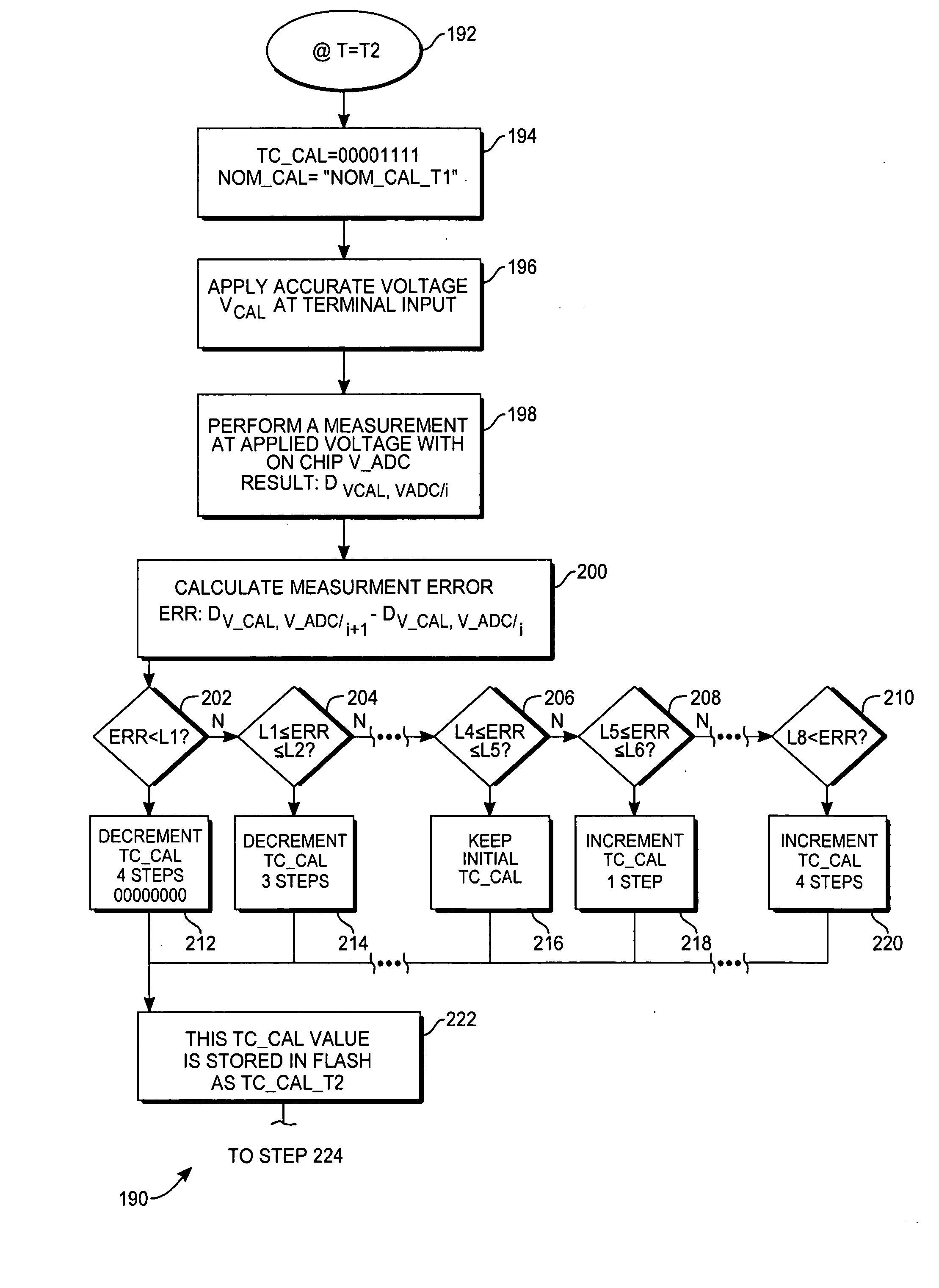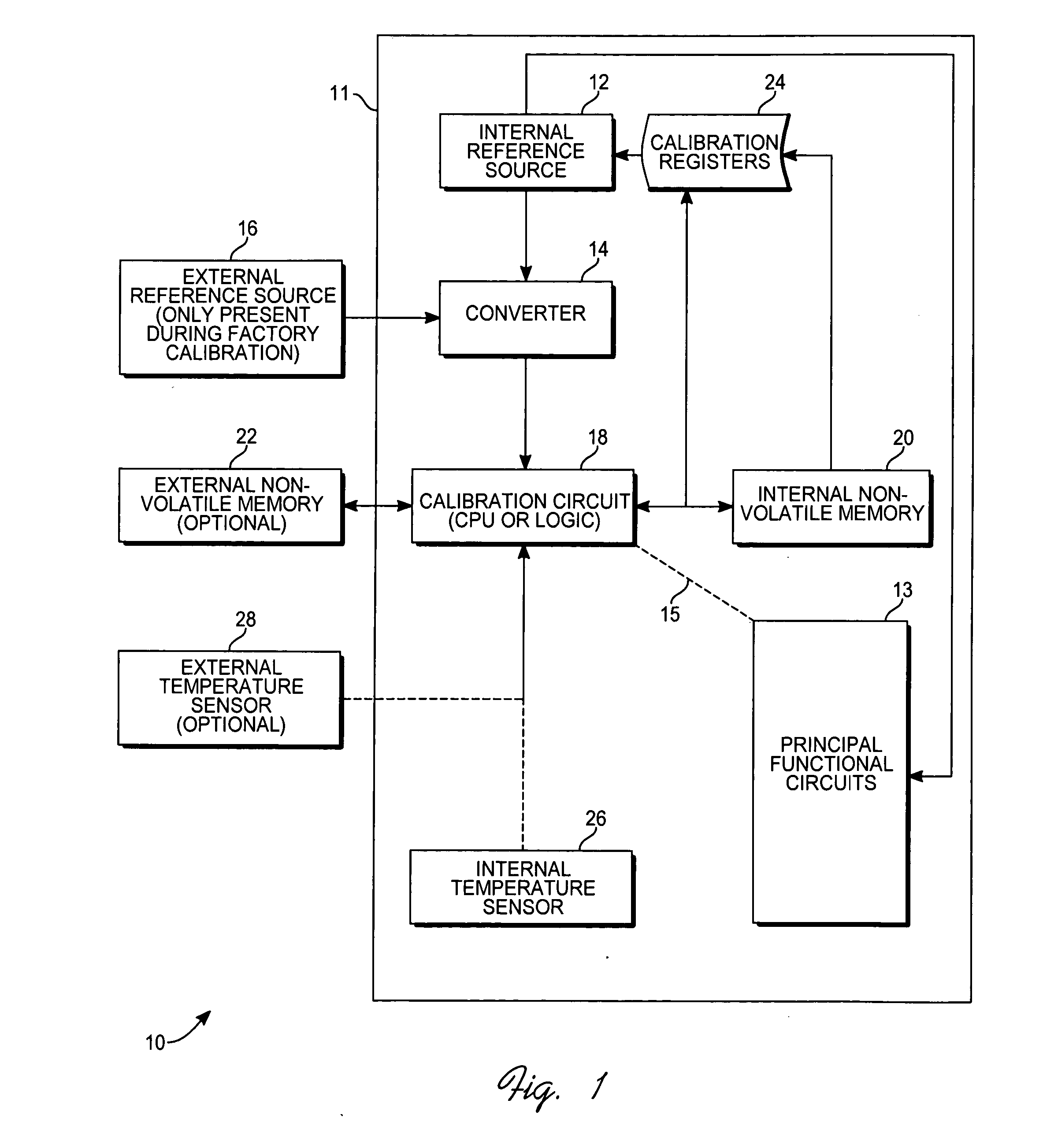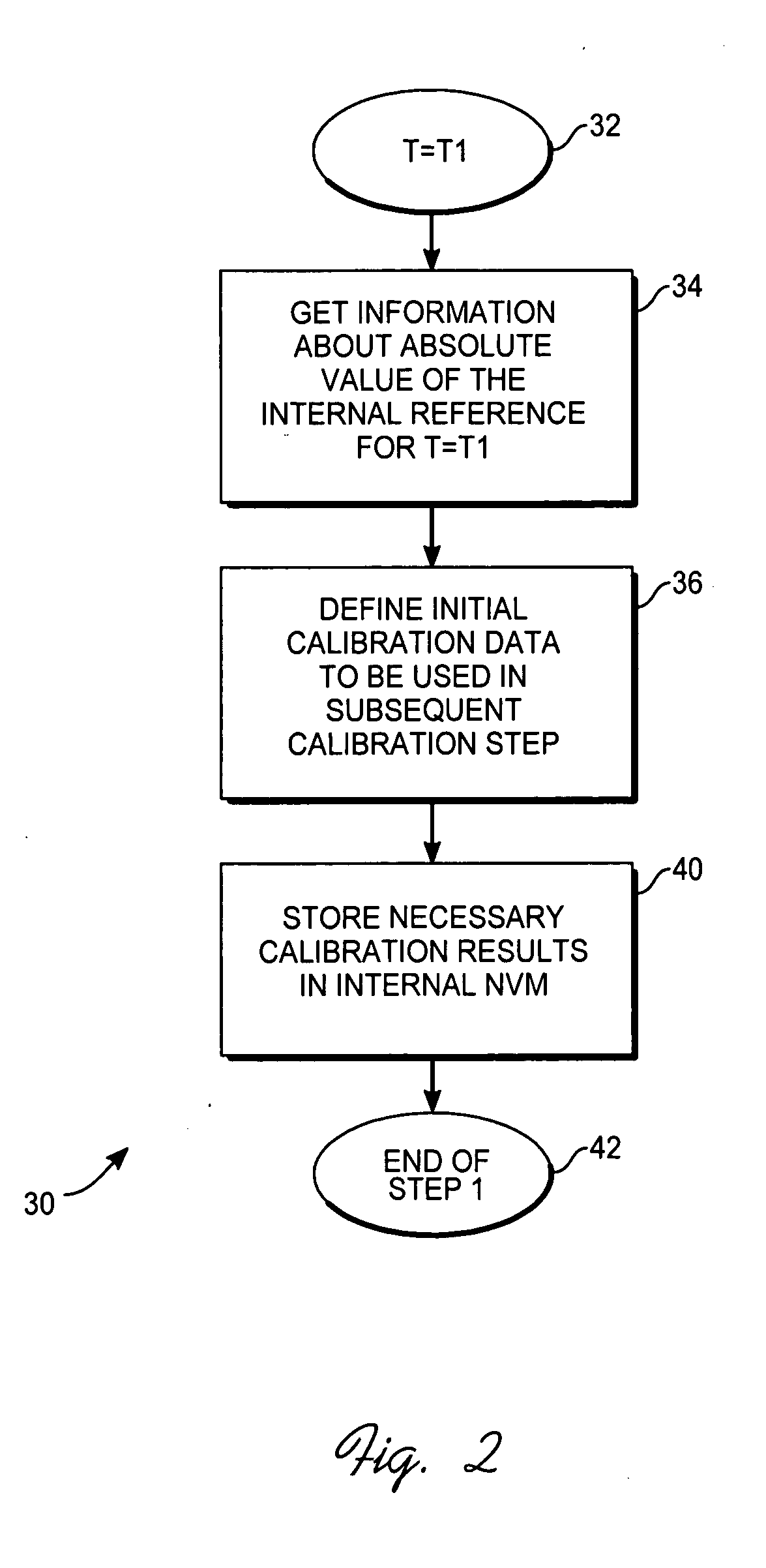Method and apparatus of temperature compensation for integrated circuit chip using on-chip sensor and computation means
a technology of integrated circuits and sensors, applied in the field of temperature compensation integrated circuits, can solve the problems of expensive procedures for calibrating integrated circuits (ic) at two or more temperatures, test equipment and test logistics, etc., and achieve the effects of simple test logistics, reduced total test time, and reduced temperature dri
- Summary
- Abstract
- Description
- Claims
- Application Information
AI Technical Summary
Benefits of technology
Problems solved by technology
Method used
Image
Examples
Embodiment Construction
[0058]FIG. 1 depicts an apparatus 10 for temperature calibration of an internal reference source residing on an integrated system on the integrated circuit chip 11. The calibration method of the present invention is aimed to improve the temperature stability of the integrated system with an internal reference source 12 and an internal sensor 26. By integrated system here we mean a true system on-chip design, or a system with more than one chip integrated in the same package.
[0059] A converter 14 is coupled to the internal reference source 12. Converter 14 is a generic converter that converts the reference value to a digital value. In a case of an internal analog voltage reference, the converter is an analog-to-digital converter (ADC). In a case of an internal time reference, i.e. an oscillator, the converter is a time counter. The internal reference source is calibrated with respect to some parameter, such as temperature, measured by an on-chip sensor, such as a temperature variabl...
PUM
 Login to View More
Login to View More Abstract
Description
Claims
Application Information
 Login to View More
Login to View More - R&D
- Intellectual Property
- Life Sciences
- Materials
- Tech Scout
- Unparalleled Data Quality
- Higher Quality Content
- 60% Fewer Hallucinations
Browse by: Latest US Patents, China's latest patents, Technical Efficacy Thesaurus, Application Domain, Technology Topic, Popular Technical Reports.
© 2025 PatSnap. All rights reserved.Legal|Privacy policy|Modern Slavery Act Transparency Statement|Sitemap|About US| Contact US: help@patsnap.com



